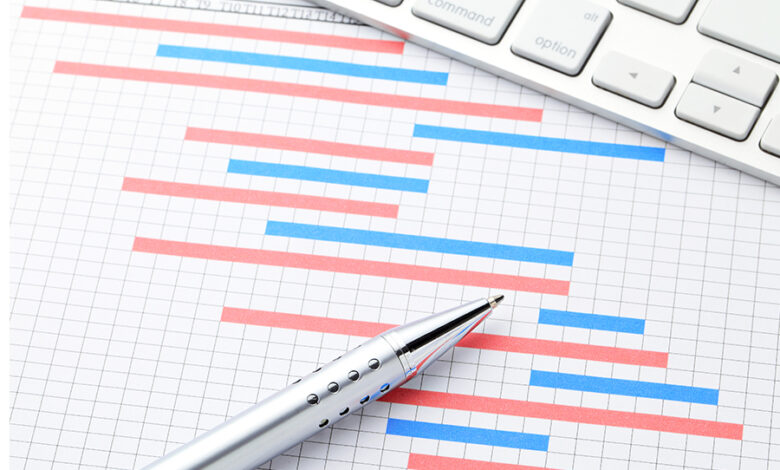Project Management CPM

Project Management CPM – How to Use
What tasks does your team need to do to bring your next project to completion? The Critical Path Method (CPM) enables you to determine the sequence of tasks that is crucial for the completion of your project.
It helps you visualize what needs to be done, manage dependencies, and set realistic objectives. Read on to find out how to use CPM for project management step by step.
Step #1 Project Management CPM
List All Project Activities
 Breaking down your project into tasks is the first step to using the Critical Path Method. For each task, assign an ID such as a letter, number, or combination of both (useful for projects with many tasks) as well as a task duration.
Breaking down your project into tasks is the first step to using the Critical Path Method. For each task, assign an ID such as a letter, number, or combination of both (useful for projects with many tasks) as well as a task duration.
For example, if your project is to build a website, activities may include graphically designing the website, finding a web host, creating a home page, planning its structure, choosing a content management system, and so on.
Tip: To keep the list compact, list only high-level ideas, e.g., “graphically design the website” rather than “design a specific element of the home page.”
Step #2 Project Management CPM
Determine the Activity Sequence
 Next, you have to determine what tasks are dependent on each other. One of the benefits of doing this is that it will enable you to identify the tasks your team can work on at the same time.
Next, you have to determine what tasks are dependent on each other. One of the benefits of doing this is that it will enable you to identify the tasks your team can work on at the same time.
For example, creating content for the website will be dependent on having a content management system.
At the end of this step, you will have a list of dependent tasks or an activity sequence.
Step # 3 Project Management CPM
Create a Network Diagram
 A network diagram is a visual chart that maps up activities chronologically. It helps you visualize tasks better than a list and makes it easier to understand the relationships between them.
A network diagram is a visual chart that maps up activities chronologically. It helps you visualize tasks better than a list and makes it easier to understand the relationships between them.
Place each task in a rectangle or square. Draw arrows from tasks to depict their dependencies.
Step #4 Project Management CPM
Estimate the Duration of Each Activity
 Depending on the type of project you handle and your experience with similar projects, you can use different estimation techniques.
Depending on the type of project you handle and your experience with similar projects, you can use different estimation techniques.
You can start with simple educated guesses or use previous project data. You can also take into account the standards in your industry to define the duration of the task.
Another approach is to use the Forward Pass and Backward Pass methods.
- Forward Pass – Using a specified start date, you can calculate the Early Start date and the Early Finish date. Early Start is the highest Early Finish value from the predecessor activity. Early Finish is Early Start + duration.
- Backward Pass – Calculate Late Start and Late Finish dates backward from the last scheduled activity. To calculate Late Start, subtract duration from Late Finish. Late Finish, meanwhile, is the lowest value from the successor activity.
Step #5 Project Management CPM
Calculate the Critical Path
 Write down the start and end time of each activity beginning with 0 for the first activity start time. Its duration should be its end time. Each subsequent activity’s start time is the end time of the previous activity. To calculate the end time, add the duration to the start time.
Write down the start and end time of each activity beginning with 0 for the first activity start time. Its duration should be its end time. Each subsequent activity’s start time is the end time of the previous activity. To calculate the end time, add the duration to the start time.
Next, use the end time of the last activity in the sequence to figure out the total sequence duration. The critical path is the sequence of activities with the longest duration. While you can calculate the critical path manually, you can use software to do it faster.
Step #6 Project Management CPM
Figure Out the Float
Float refers to how much you can delay a task without delaying subsequent tasks and the project completion time. Critical tasks cannot be delayed, so float applies to secondary tasks only.
- Total Float refers to how much you can delay an activity from the early start date without compromising the project completion date. You can use Late Start – Early Start or Late Finish – Early Finish to figure Total Float.
- Free Float is the amount of time you can delay an activity before it pushes back the subsequent activity. Early start (of the next task) – Early Finish (of the current task) equals Free Float.
Calculating float manually for each task takes time, which is why many project managers use software solutions to calculate the Critical Path. Software makes using the CPM for Project Management easier. You may want to consider using CPM solutions if you plan to follow the Critical Path Method.
Quick Summary of Project Management CPM Steps
- List All Project Activities
- Determine the Activity Sequence
- Create a Network Diagram
- Estimate the Duration of Each Activity
- Calculate the Critical Path
- Figure Out the Float
